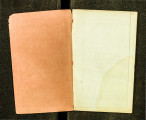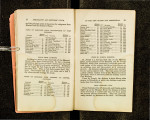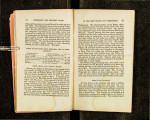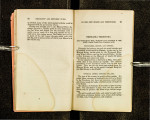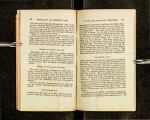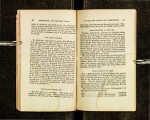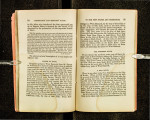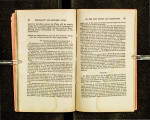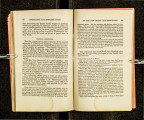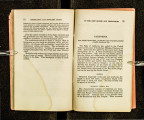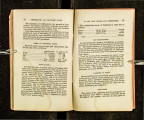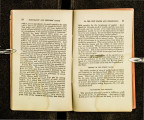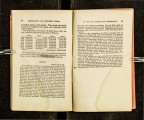| OCR Text |
Show . . 10 IMMIGRANTS' AND SETTLERS' GUIDE nati, nnd thence by the Mississippi and Ohio Railroad to St. Louis, a distance of 1,035 ·miles. Th~ Baltimore and Ohio Railroad, fi.·om Bultirnore and Washington, via Harper's Ferry and Grafton, to Wheeling and Parkersburg, where the Cleveland and Ohio River Railroad and the Marietta and Cincinnati Railro:-t.d connect with all points North and West. Those preferring water travel to St. Louis or Cincinnati will have choice of boats on the Ohio River in good stages of water. Western (Ma8s.) Railway, from Boston vid Worcestey, Springfield, Pittsfield, to Albany, where it connects With the New York Central to Buffalo and Niagara Falls, a:nd. thence to-Chicago by way of the Lake Shore and M:ch:gan Southern 01: Great Western (Canada), a?d ltiich1gan Central Railroad to Chicago, a total dtstn.nce of 1,036 miles. * . Th?se h~ving time at their disposal and not over .well supr:hed :VIth ~oney, or those encumbered with large outfits, will ~nd the Lake and River route to the West the 1nost des1~~able. From Maine, New Hampshire, and Vermont, emigrants will find the St. Lawrence route the most acces~ible; those from Northern and Western New York ~Ill take .the steam boat lines round the La~{es to ~hica~o ; ~h1le those living on or near the Ohto a~d .Its tributaries, will take passage for Cairo or St. L?u1s m one of the numerous steamers which ply that river. Arrived at 9hicago or St. Louis, now the two main half-.wa~ stopping-~laces between the East and the West, t~e em1g:·ant d.es.tined for the Far West will have no difficulty .In deciding on the route to be taken. !~e ;ail.roads leading westward from Chicago to the MI~SISs1pp1 ar~ numerous; but with the exception of the Chicago, Burlmgton and Quincy Railroad, their western * I o:nit to give the rates of fare by these several lines as the are subJect to frequent. ch~nges. They can readily be as~ertaine~ ~o~ d;[r to day by apph?at10n at the different Railroad and Steamoa o ces. See concludmg remarks as to cost, &c. , TO THE. NEW STATES AND TERRITORIES. 11 connections to the Missouri River are incomplete, and I do not, therefore, deem it necessary to speak of them in detail. By the Chicago, Burlington and Quincy Railroad the traveller will reach the Mississippi at Quincy, a distance of·265 miles southwest from Chicago, thence he will proceed by the Hannibal and St. Joseph Railroad to St. Joseph on the Missouri River, a further distance of 208 miles due 'vest. If he prefer 'vater communication, he can take boat at Quincy to St. Louis, and thence up the Missouri River to .Atchison, St. Joseph, Nebraska City, Omaha City, or such other place as he may have selected as his starting-point across the Plains. From St. Louis he has choice of continuous railroad or steamboat travel to St. Joseph, beyond which there is no railroad communication. If the Missouri River is in good boating condition, I should recommend emigrants to take stearnboat, as being more comfortable and less expensive than the trip by rail. If they are pressed for time, however, and determine to proceed by rail, they can take either the North Missouri llailroad to Macon City and thence by the Hannibal and St. Joseph Railroad to St. Joseph, or the Pacific Railroad to Jefferson ·City, and thence by boat to the same point or to river towns higher up. STARTING AND OUTFITTING POINTS. The principal points of outfit and departure on the Missouri. River for emigrants across the Plains, as before stated, are Atchison and Leavenworth in K!tnsas, St. Joseph, Mo., and Nebraska Oity and Omaha, Nebraska. As these are to a great extent rival towns and routes, each possessing some advantage over the rest, it is of importance to consider them separately. ROUTE FROM LEAVE~ORTH. Leaven worth is the largest town west of the Missouri, |



